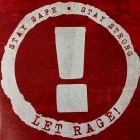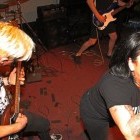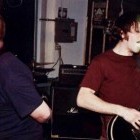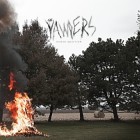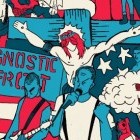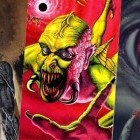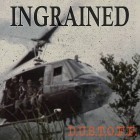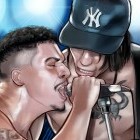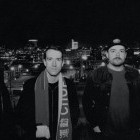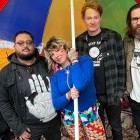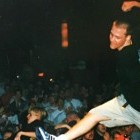The Cocaine City Boys were out in full force this balmy summer evening. Tired day laborers, office workers, and civil servants, coming off the #7 train, cast a weary glance towards the menacing presence gathered at the foot of the 90th street subway station in Jackson Heights, Queens. Descending the station's platform became a perilous undertaking as an unavoidable gauntlet gathered in mass at the foot of the stairs, a band of menacing teenagers ready to strike out with the maximum amount of violence at the slightest hint of provocation over real or perceived slights.
It was the summer of 1982 and the CC Boys were a curious anachronistic wolf pack, a throwback to an earlier era of 1970s New York City street gang culture.
Youth gangs had existed for decades in the city's landscape, but it was the '79 theatrical release of The Warriors that seared the image of violent, territorial gangs from New York's five boroughs in the nation's consciousness. The ironic part being that the world being described on the screen was, for the most part, irrevocably changing. Gangs were becoming obsolete and a new cultural phenomenon named hip-hop was beginning to funnel the up and coming generation's energy onto new directions.
Hip-hop's B-Boy aesthetic was just about to break into the mainstream's radar via groundbreaking appearances such as the Rock Steady Breakdance crew and their scene-stealing moment in movies like Flashdance. The CC Boys stubbornly clung onto outdated rituals and motifs from a bygone era. Gang colors were still proudly worn on sleeveless denim vests over leather jackets. Assorted World War II or Civil War paraphernalia, bandanas and motorcycle boots completed their daily ensemble. By the end of the year, various members with names like Junebug, Chocolate, Chiquitin, and Pan Quemao, would be headed to juvenile correctional facilities like Spofford Juvenile Center up in the Bronx. From there, as the '80s continued, most of them would end caught up in an endless downward spiral of drugs/crime followed by recurring stints of doing hard time at Rikers Island or any of the upstate New York prison farms that doubled as gladiator academies.
I was a big science fiction nerd growing up and I remember reading Norman Spinrad's short story, The Last Hurrah of the Golden Horde. The story, set in a dystopian future, told the tale of a group of obsolete Mongol horsemen that launched a last futile mounted charge against technologically superior odds. While the CC Boys were nowhere as romantic-sounding as this, there was a melancholic aura of tragedy surrounding them. One knew that their days were numbered and if they could have spoken what they intuitively must have felt, I'm sure they would have considered themselves the last of a dying breed. They were struggling to hold onto what was familiar to them even as events far out of their control turned their world upside down. My parents used them as a cautionary tale of who not to be and stay away from. They needn't have bothered as me and my crew of aspiring 13-year-old B-Boys from the neighborhood were scared shitless of them.
The CC boys were only about four or five years older than us at most, but they looked like grown-ass men to us, with a ferocious reputation for mayhem. Rumors of separate divisions of the gang, culled from other parts of the city, were ready to back them up at a moment's notice. Stories of a legendary rumble at Flushing Meadows park in '79 still circulated around the way. The dawn of the hip-hop era was supposed to have replaced fights with choreographed breakdance battles, loosely affiliated graffiti crews over gang chapters, and an overall ceasefire that trumped the violent gang rumbles of the 1970s. A lot of people I knew growing up didn't get this memo, those breakdance showdowns more often than not degenerated into violent melees. Graffiti writers beat down rival crews on sight and bands of roving stick-up kids declared open season on everyone's gear, snatching up sneakers, jackets, jewelry, and even your last nickel if you let your guard down.
The term B-Boy comes from the original rap parties up in the Bronx during the early '70s. Whenever the DJ would replay the coolest part (known as the "break") from a classic funk, soul, or rock jam that would get everyone moving en masse to the dance floor. The break boys, or "B-Boys" for short, would command the center, showing off stylized routines that would eventually be codified into breakdancing patterns. By the time this emerging style filtered down to our neck of the woods in Queens, and the rest of New York City's five boroughs, being a B-Boy meant being involved in at least one of the four distinct yet interrelated aspects of the culture.
These four elements being graffiti, breakdancing, DJing and rapping/MCing. All of these factors came together at block parties, clubs, and events held at community youth centers. We soon discovered that the local mecca for the burgeoning hip-hop scene in Jackson Heights was a skating rink called United Skates of America, right on Roosevelt Avenue. I can't say I did much skating in there. Me and my friends hung out on the sidelines, feverishly absorbing the heady, excitement-filled atmosphere.
Our heroes were Queens Breakdance crew the Dynamic Rockers (Breakers). They actually appeared in the 1981 documentary Style Wars, battling the Rock Steady Crew at, of all places, United Skates. I'll never forget watching some morning TV show that was doing a feature on breakdancing and there's the Dynamic Rockers teaching Penny Marshall (Laverne from the Laverne & Shirley sitcom) how to bust a headspin wearing a sheepskin hat, with some help from the crew. I think I spit out my Frosted Flakes cereal in disbelief.
My first exposure to a live musical performance took place at United Skates that same summer of '82. Afrika Bambaataa's groundbreaking "Planet Rock" 12" record had just come out. I can still vividly recall the indelible impression that made on me 32 years after the fact. Afrika and his backing group, the Soul Sonic Force, came out onstage in these over-the-top superhero/science fiction outfits of neo-futuristic garb, brandishing Samurai swords, and multi-colored silk outfits topped off with Native American headgear. They looked like a wild mish-mash of George Clinton's P-Funk All Stars, Marvel Comics' Fantastic Four characters, and swaggering Superfly attitude. It was like nothing I'd ever seen before or since. The music was on another level, as well. I wouldn't learn this or fully appreciate it until much later, but Afrika's sampling of the un-hip German electronic group Kraftwerk as the rhythmic base for "Planet Rock," along with layering rap's visceral energy on top of it, was pure genius. This was a prime example of hip-hop taking some previously existing influences and creating something completely different and vital out of it, all the while referencing the reality of inner city life.
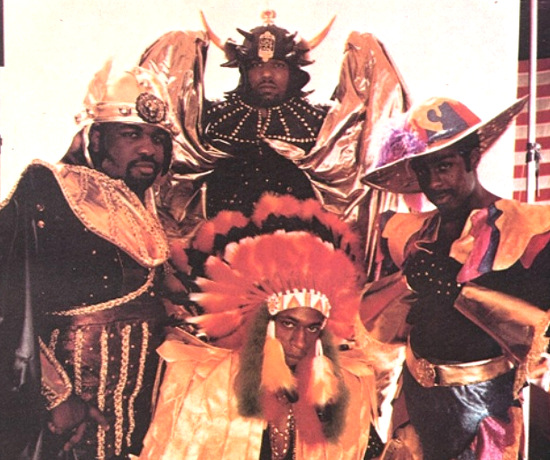
Afrika was a veteran of the '70s gang wars in the South Bronx, he'd learned firsthand what the CC Boys were about to (belatedly) discover. That world was slowly coming to an end, a new era was being forged, and music would be the answer through a philosophy espoused by the organization he started, the (Universal) Zulu Nation, whose credo was summed up as: "Love, Peace, Unity & Having Fun." This was an outlook my teenage self could fully embrace.
At heart, my friends and I were good Catholic school kids from working class families that were striving for a better future. Seeing our neighborhood tough guys heading to a life of crime served as a powerful deterrent on who not to be and hip-hop provided tools for us to channel that restless adolescent energy into more creative endeavors. I was never very good at my chosen field of graffiti, and even less at breakdancing or DJing/rapping, but that didn't matter. I still felt a part of the whole. The sum being greater than its individual parts, in this case, a vibrant youth culture full of intricate terminology that only its participants could understand and relate to.
As the looming specter of middle age now appears before me, hip-hop's once "outsider" status has become a moot point. Its fashion, music, and attitude has been irrevocably integrated into the mainstream's fabric in such an extensive way. Far more than the originators could have imagined beyond their wildest dreams. My initial love of hip-hop has never wavered. I might not listen to anything that passes for rap these days (haven't in a long time) or exhibit any of the current accoutrements of the culture. It's something that's become more internalized. That initial joy and wonder, of using the music as an endless source of inspiration, has stayed with me. Long after I've put away the spray paint cans and hung up my Adidas shell toe sneakers with the fat laces up on the shelf.
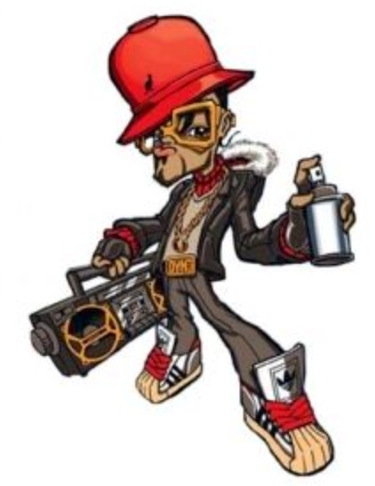
RIP to friends from the old hood: Frank Justich, Johhny "ER 1" Tavares, and Johan Correa.



